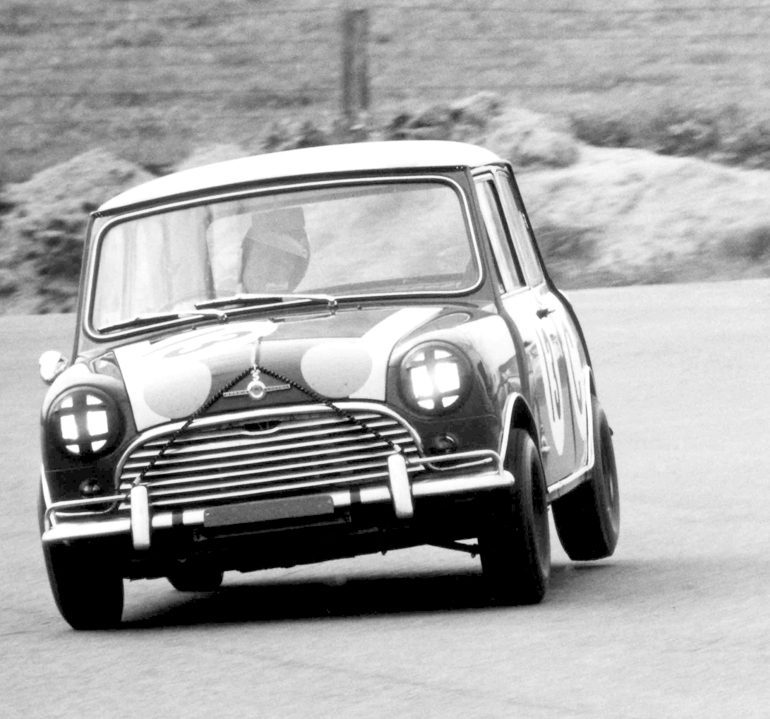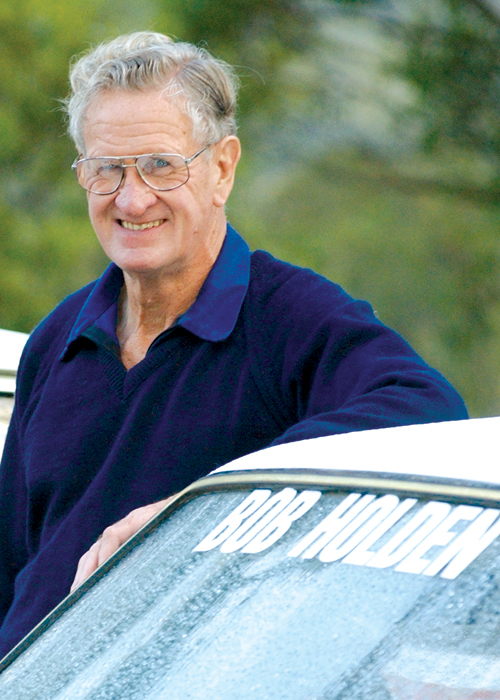
For anyone involved in motor sport within Australia, the name of Bob Holden has been a prominent one for many years. After starting out during the 1950s in a Holden (no relation) sedan Bob tackled a variety of events in both racing and rallying with a number of different types of cars, most notably Mini Cooper S models. He is equally famous as a successful builder of competition cars, having constructed and maintained many different makes for a variety of customers over the years. Although now 72 years of age, he remains active and still enjoys his motor sport behind the wheel of both a Ford Escort and a Toyota Corolla. Our South Pacific Editor Patrick Quinn caught up with Bob near the scene of one of greatest successes, Bathurst.
We are here at Bathurst just below the famous Mount Panorama circuit, in a pavilion with about 20 BMC Minis. Not that far away is the famed circuit where, back in 1966, you and Rauno Aaltonen won the Bathurst 500 driving a Mini Cooper S. Can you enlighten us as to what led up to that event in 1966 and what brought you to Minis back then?[pullquote]
“So that night I paid a visit to where the cars were being prepared, and sort of borrowed it, taking it back to my shop.”
[/pullquote]
Holden: Going back is really pretty easy. I had been rallying all sorts of cars before that, and I got involved in Minis because one of my employees had one. So I bought one, turned it into a rally car, and started to go fairly well. This led to a friendship with journalist Evan Green, who was the pr man for BMC in Australia. The question of Bathurst came up, and Evan was always looking at the numbers as a Mini had recently won the Monte Carlo Rally. So, it was decided to run a team of Mini Coopers at Bathurst with the likes of Timo Makinen, Paddy Hopkirk, and Rauno Aaltonen as drivers. By then I was running three different Minis and when it came time to match the cars and drivers for Bathurst I was asked to join.
Makinen was European champion, and Hopkirk was British champion, making Rauno the junior member of the team. I was partnered with Rauno and we got on very well indeed, plus we were both the very mechanical type of people. This also meant that we also kept in touch with the preparation of the cars as I also got on well with the guys preparing them. Back then BMC Australia used to use their apprentices to prepare the cars, under supervision, of course.
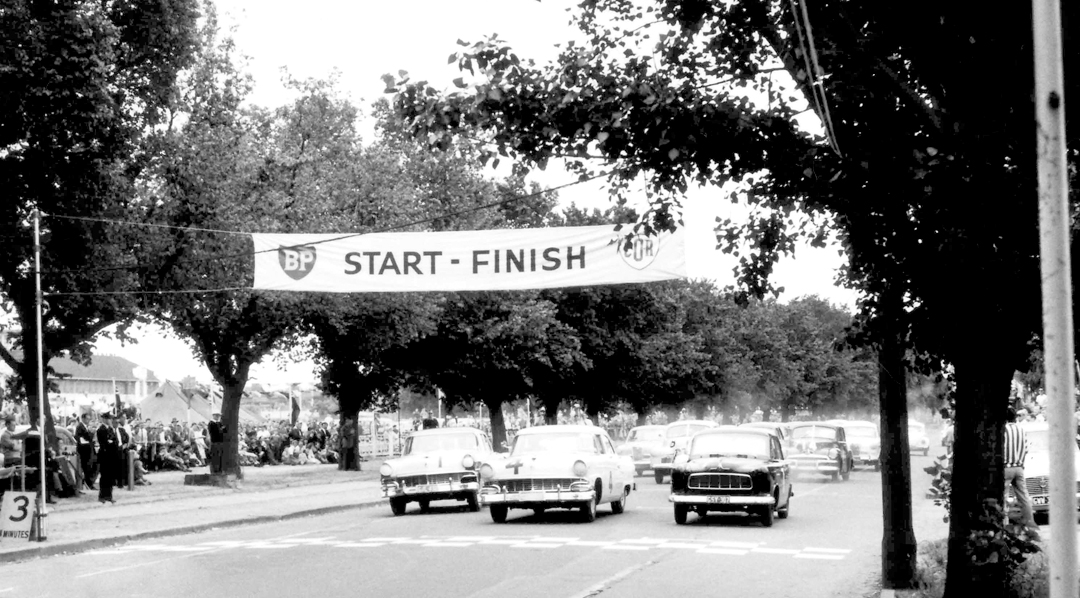
Photo: Autopics.com.au
On the Monday before the race I received a call from one of the apprentices with whom I had become friendly. He said that they had finished the cars, but that one was down on power and as we were the junior team, we were going to get that car to race in. So that night I paid a visit to where the cars were being prepared and sort of borrowed it, taking it back to my workshop in suburban Sydney.
My intention was to blueprint the car completely before anyone knew it was missing. I knew that if I didn’t, not only would it remain down on power, but would also probably shake itself to bits. I think within an hour and a half we had stripped that car right down to its body, engine, gearbox, wheels, axles—everything. We even stripped the gearbox and polished the shafts and all the gears, plus the engine was pulled apart and re-blueprinted. We made sure that it was all back together by the next morning and back in the BMC workshop. Then later that day we pinched the car again, worked all night again, making sure it was back in the workshop first thing in the morning. Then we pinched it again the third night, but this time we drove it flat out from Sydney to Canberra and back (360 miles) to see what would break. Nothing did.
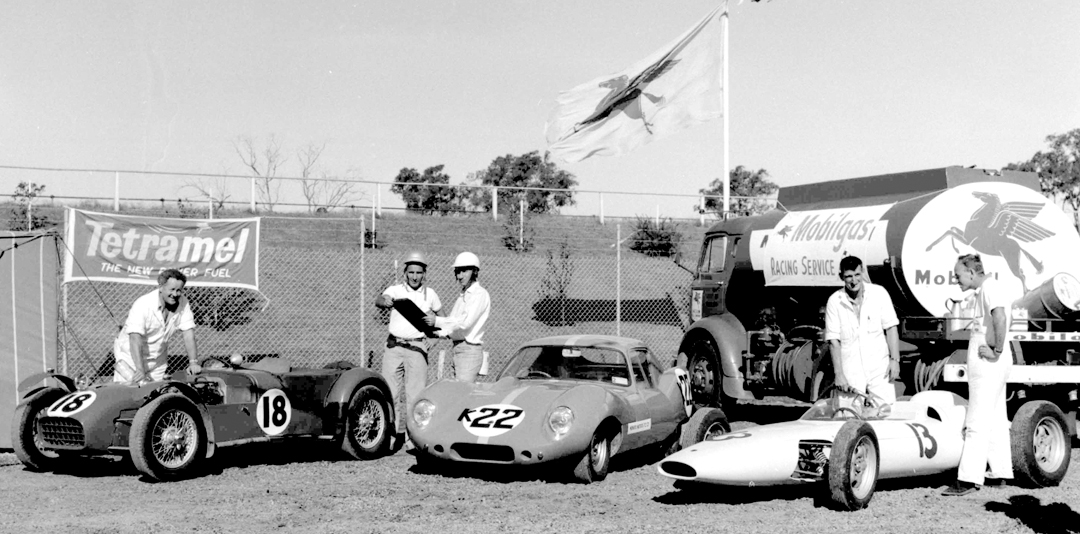
Photo: Autopics.com.au
We were feeling pretty pleased with ourselves, but then we heard that Brian Foley, the senior Australian driver, was coming to the BMC workshop to dyno each car and choose which one to race. We tested the cars before he got there and “ours” had 4 ½ horsepower more than the others. So we screwed the ignition down a bit. Anyway, Brian came in and selected one of the other cars, and I then reset the ignition. Practice was a bit of a worry too; because we had to make sure that we weren’t faster than the other Minis.
It’s amazing, thinking back now, that we won that race and in front of all the other Minis and Ford Cortinas. It really put the model on the map in Australia. Rauno and I have kept our friendship, and on the 40th anniversary of the win I rang him in Finland, asking if he knew what was special about the day. He didn’t realize at first, so I said that it had been 40 years since we had both won Bathurst. He then started to congratulate me and I asked him why he was congratulating me? “Well, you won the race,” he said. “No! No! You won the race.” He then said. “No, it was 55-45; it was all your ideas that won that race for us.” Now for him to say that, straight off the cuff after 40 years, was very, very special to me.
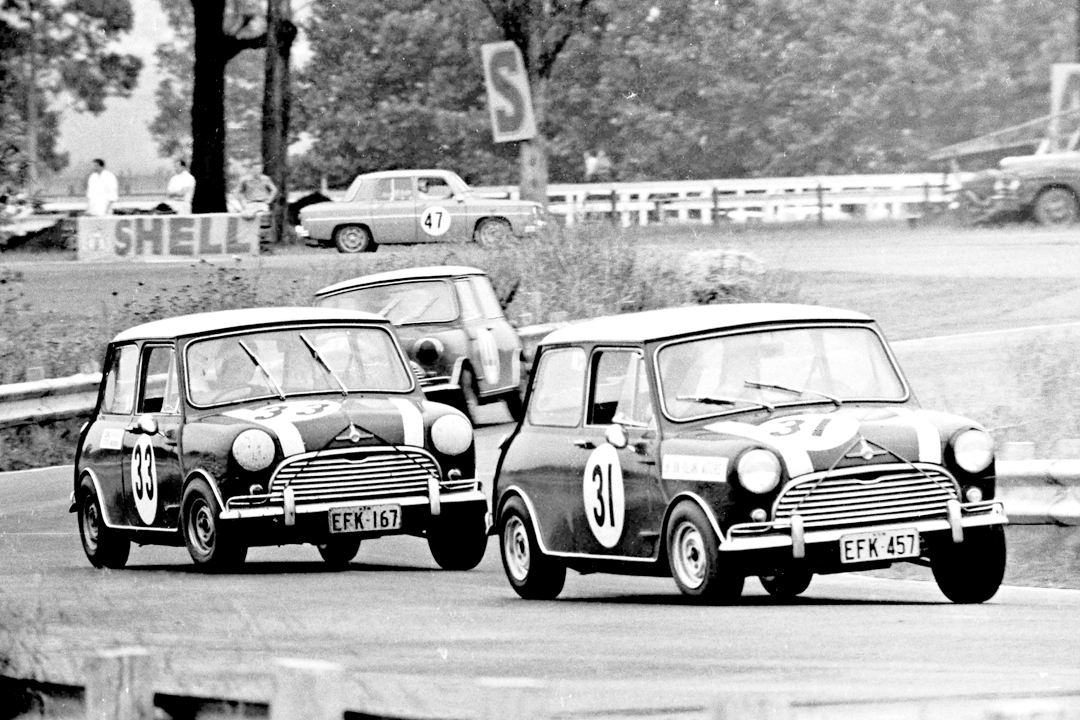
Photo: Autopics.com.au
Can you tell us about the rallying you did back then?
Holden: Yes we were in the thick of it. Bathurst finished on Sunday and the following Wednesday we started in the Southern Cross Rally, in Minis, of course. That was one of the reasons why we used Makinen, Hopkirk, and Aaltonen at Bathurst, as they were here anyway for the Rally. Back then they were known as the best drivers in the world.
Evan Green was always thinking and sometimes to his detriment. One night during the rally he was walking around looking really worried and I asked him what was wrong. He said that Castrol was putting so much into sponsorship of the Minis and there wasn’t much we could do for them in return. It was during the time when advertising wasn’t allowed on the cars, so that was out. So, I suggested to him that a way around it was to paint the cars like a Castrol oil tin. No one liked the color very much, but that’s what they did, and everyone knew who the main sponsor was.
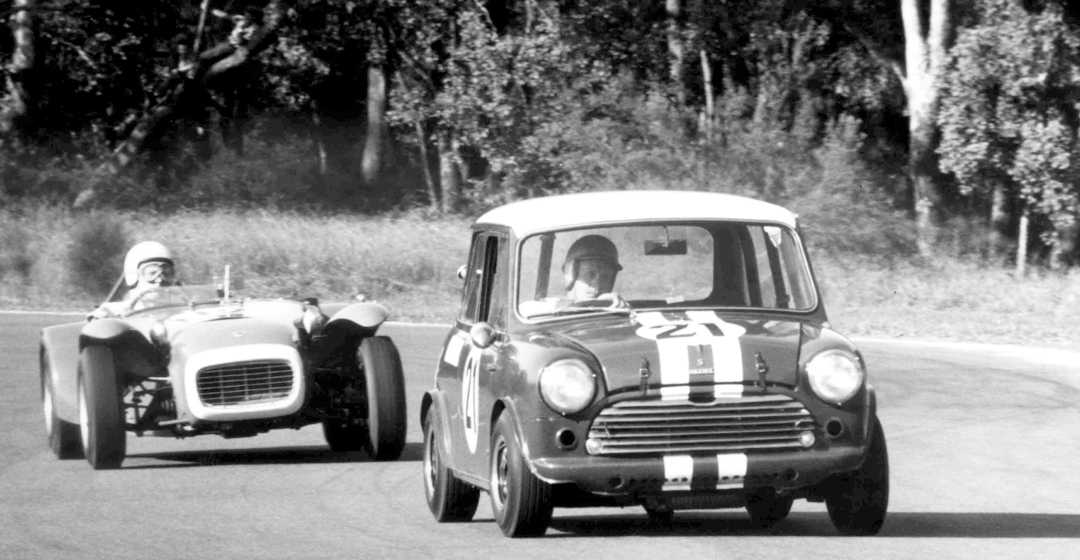
Photo: Autopics.com.au
After your time with the Minis you moved on to Ford next, can you discuss those days?
Holden: No, it was Volvo first. I rallied Volvos in ’68, straight after the Minis. Volvo was becoming involved in motorsport around the world, and a works Volvo was organized for me to use in the London to Sydney Marathon. We first drove it overland to Europe along the planned rally route, and the poor old thing fell to bits in Iran. More by good fortune, when we drove into Tehran about 3:00 in the morning I noticed a big Volvo sign beside the road. They were constructing a large truck assembly plant on the outskirts of Tehran. What we did on those sorts of trips, was to go for three days and nights without stopping and then stay in an international hotel for 24 hours. So, whatever time you got there you could stay for the whole 24 hours with food and water and beds to sleep in.
Anyway, we went back to the factory the next morning, as by that time I was pretty frantic as the car had just collapsed with the back hanging off it. I met up with three of the top engineers and one of them said, “Mmm! We must fly you home, this car is dead.” I said, “No, sorry! It’s got to be that car to bring me home again.” Anyway, they sent a telex three meters long back to the factory—it was hilarious. We were there for two days while they rebuilt the car back together again, welded it up and fixed things, but they were very, very good. Volvo in the UK was great as they took me and the car to Sweden, where it was rebuilt again using another shell! They even supplied me with a new tool kit, as mine had been stolen.
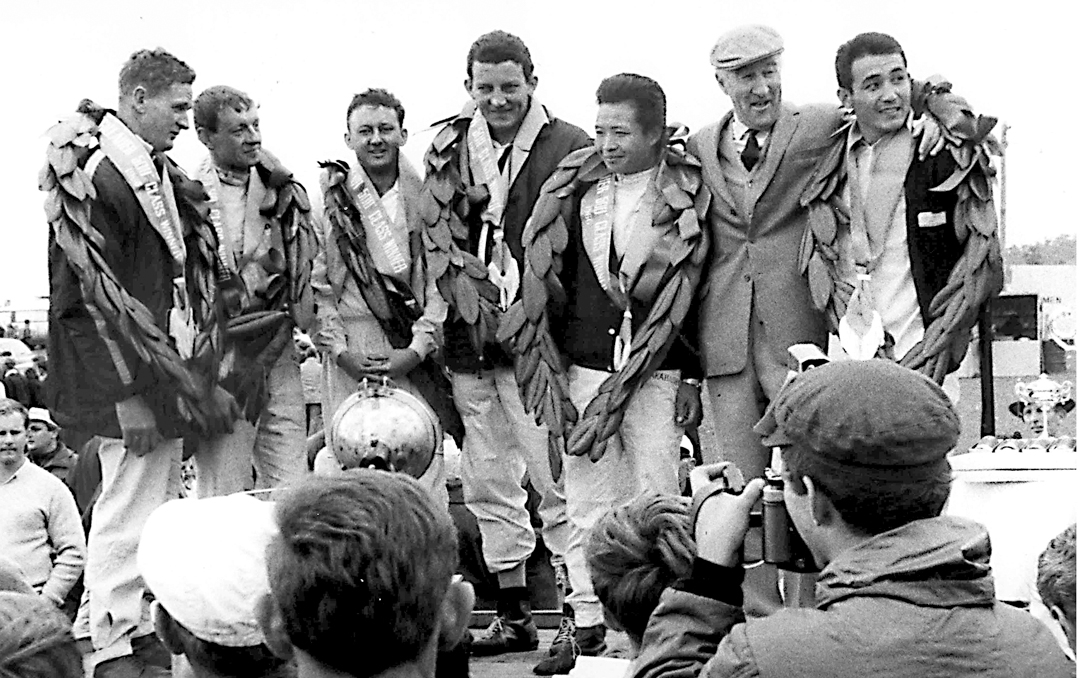
Photo: Autopics.com.au
In the Rally itself, the car was crashed by my co-driver. Somewhat unfortunate as it wasn’t his fault. It was caused by a young army truck driver who had a problem changing gear. The truck was out of control so he jumped out, only to have it run straight into the Volvo.
O.K. then, how did you get involved with Ford?
I got into my first Ford through the bad luck of three young blokes who were running a Lotus Cortina in the Rally. They had been hit by a truck, too, but managed to get back on the road by tying the car between two trucks and having them both pull in opposite directions. Anyway they managed to reach Sydney, but couldn’t afford the air fare home. So I gave them the money they needed and kept the car and then rebuilt it. Soon after I was part of the Ford Rally Team, with Howard Marsden as the manager—he was very helpful. It wasn’t much later when the Ford Escort was coming on stream, and early in the piece fellow Australian Frank Gardner, who had just won the British Saloon Car Championship, was given by Ford, a full “bells and whistles” Escort Twin-Cam, and he sent it home here to his sister. Well she didn’t want it, so I bought it from her and then raced that.
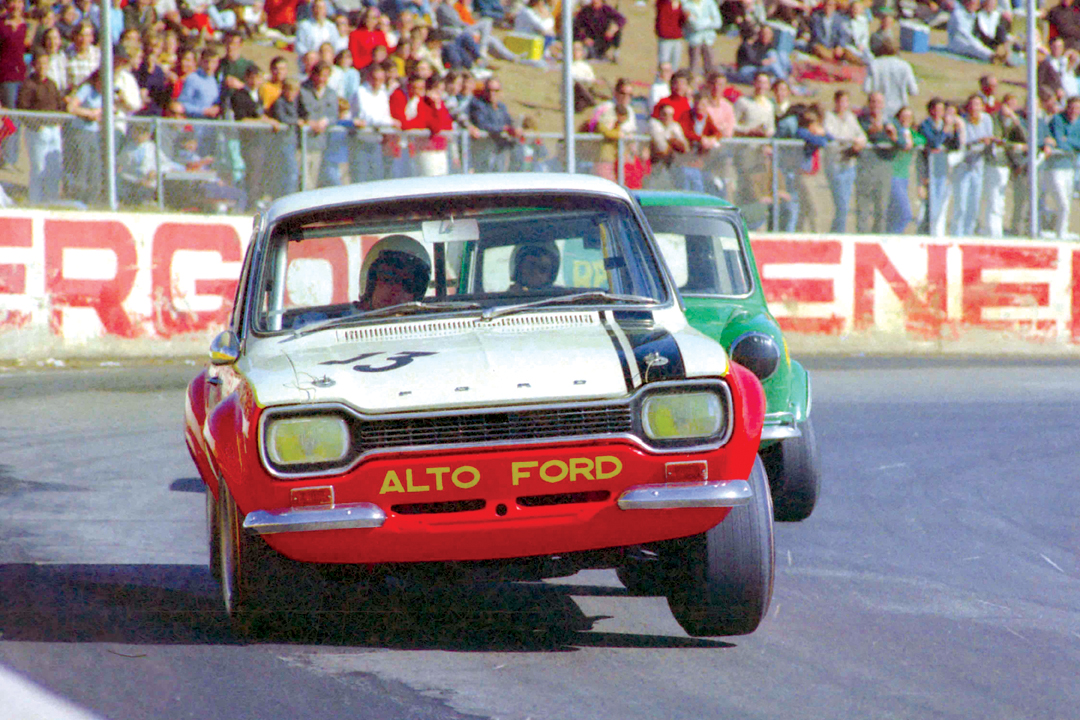
Photo: Autopics.com.au
So you were back into racing and rallying again?
Holden: One day I was doing some paperwork in a little office I had and a Pommie bloke wanders in and says, “Bob Holden?” I said “Yeah.” He then said. “I’d like you to build me a rally car.” So I said what sort? You sound English enough to know it should be an Escort.” Well I was right, but he then said that he didn’t want a quick one as he wanted to learn rallying first. We then started talking about cost and he asked if $20,000 was enough to start with. So, he pulled out his checkbook and gave me one for $20,000, and asked me to call him when I had something to look at.
His name was John Dawson-Damer and six or seven weeks later I asked him to come in and test his car. Two days later he wanders in and I pointed him in the direction of his car. Off he went, and after 30 minutes I started to get a little worried. Eventually he came back and had the biggest grin on his face, and said that it was just magnificent. I asked him who was going to navigate for him and John said that he was going to do it. I then asked who was driving and John responded, “Well, you are, of course.” So began a wonderful partnership, as John was such a magical guy, but I virtully had to teach him how to navigate because he’d only done it in treasure hunt sort of stuff back in England.
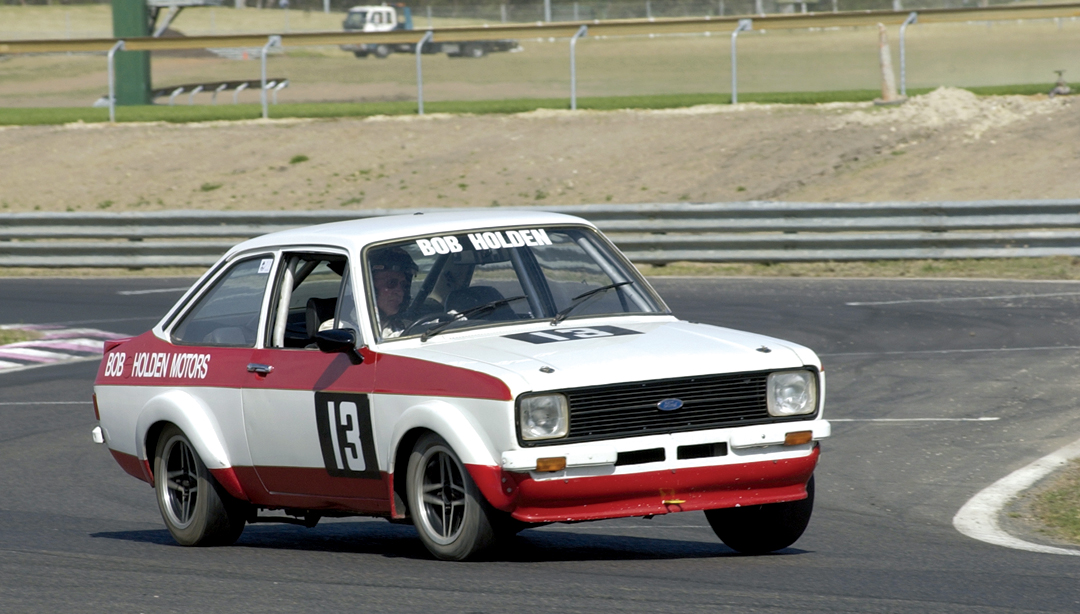
John was a magic bloke and ended up staying with us for quite a long time, so we all had a lot of fun. In the end we ran as a team in rallies all over Australia, New Zealand, and New Caledonia. Of course, John went on to win the Australian Rally Championship with Colin Bond.
Didn’t you also have a go at open-wheelers?
Holden: Yes, I ran in the Tasman Series in the Lynx Peugeot. That was the car that I kept myself broke running it, and then Colin Bond actually stole it off me and became Australian Hillclimb Champion three years in a row in that car.
In among the rallying I have never really stopped racing. I was running a little Mini-engined sports car called the Lolita Mk 1 (see VR January 2009) and it got so silly sometimes that I raced and rallied on the same weekend. Plus, sometimes the Lolita ran with my rally engine in it, which I used in a rally on Saturday night and then took it out as I needed it the following day for the Lolita.
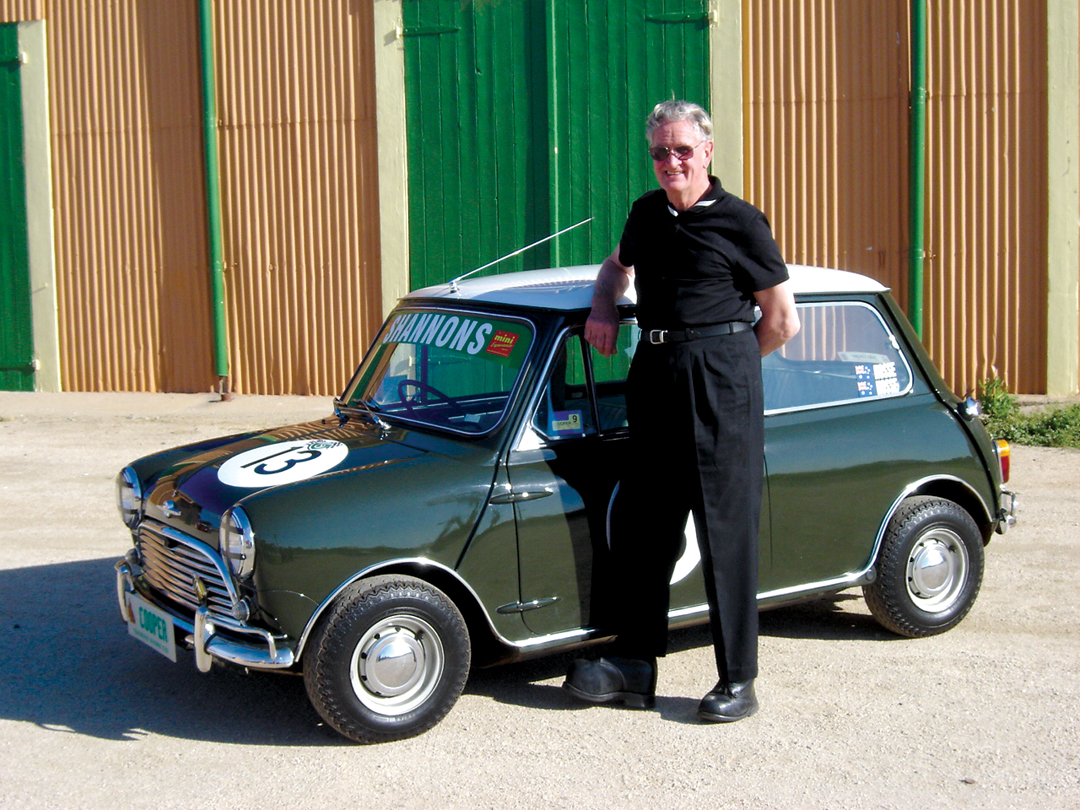
Holden: I have never really chased it. However, I did think that I was on a winner with the first Escort as it coincided with the launch of a new cigarette with the same name. I was all ready to sign on the dotted line when their chief executive knocked it back. We were talking about hundreds and thousands of dollars and I was very disappointed. I have not chased it since, but I still treat each day as a bonus because I was never ever supposed to walk when young and it’s pretty important—changes your whole attitude toward everything.
Mine was supposed to be a breech birth, and I was born with a club foot. That was in 1938, and when I was in hospital they chopped me up a bit and straightened me up. By the time I was starting to walk normally I developed polio, and being somewhat restricted for a time started me reading. I used to read and read and read ’til the cows came home.
Despite the lack of sponsorship, didn’t you keep on competing during the ’70s, ’80s, and ’90s?
Holden: That’s right. I bought a Ford Escort that had been built for the 1985 Peking to Paris Rally, which was cancelled at the last moment due to the war in Afghanistan. It was set up to do long distance events with long-range tanks, fiberglass panels, and all the rest of the right gear that you could think of. I still have it and use it in classic rallies. Being a 4-door it’s a little heavy, but it is beautifully safe. The second set of doors is very useful for using the back area for getting stuff in and out.
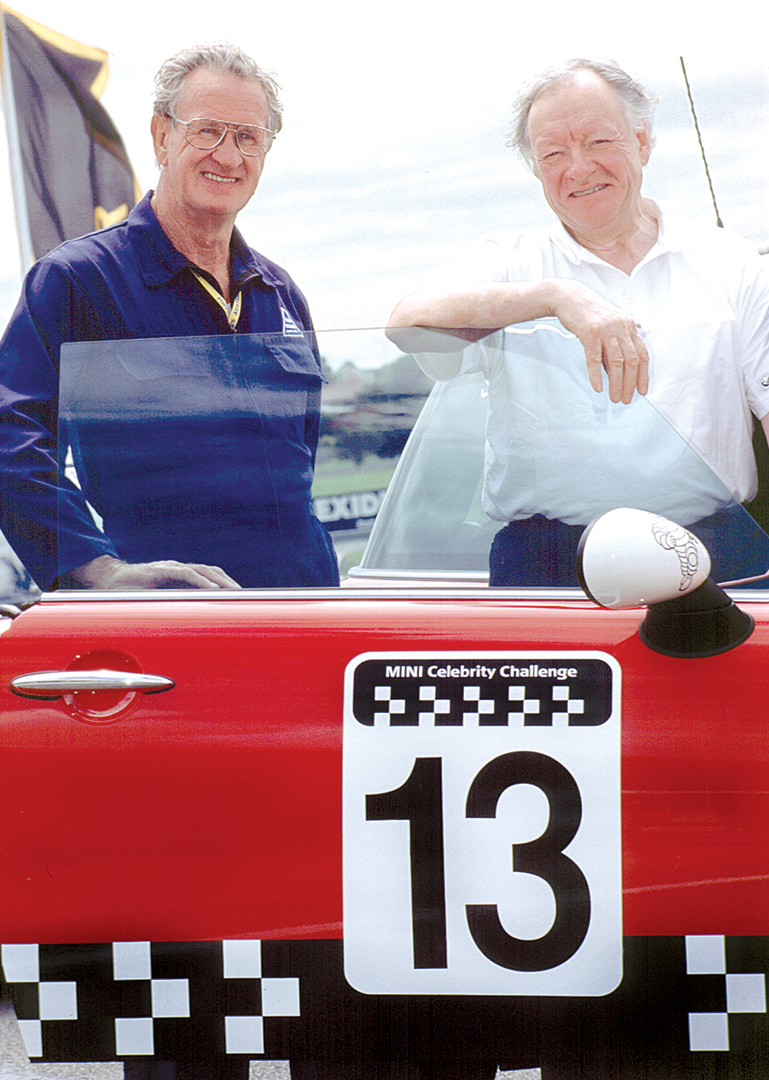
Then during the 1980s I had a deal running Toyota Corollas in Super Tourers. It was a very busy time with the Corollas as I went to Spa to do the 24-hour race. In the end I went to Spa four or five times, and then to the Nürburgring for the 24-hour event there in a car that we took from here. Then, as the Corollas were coming to the end, I moved into BMW M3s. By this stage I had retired from full-time work and being annoyed by people. However, I was quite happy to do work for people preparing cars and the like. In some cases I wouldn’t charge for my time. All they had to do was to pay for the parts and let me drive in some events.
What are you doing to stay busy now, Bob?
Holden: Still very much involved by running the Paris to Peking Escort and the Corolla in historic events. And, importantly, still very much enjoying myself. Plus being involved with so many cars means that I am constantly getting calls from current owners asking for advice on what I did to the car when it was new. The friendships created have been just wonderful. No, I never intend to retire from motor racing. In fact it’s better now than it was back then when I was competing full time, and I am getting much, much more return from my motor sport now than I used to. It’s a good thing and great fun.


